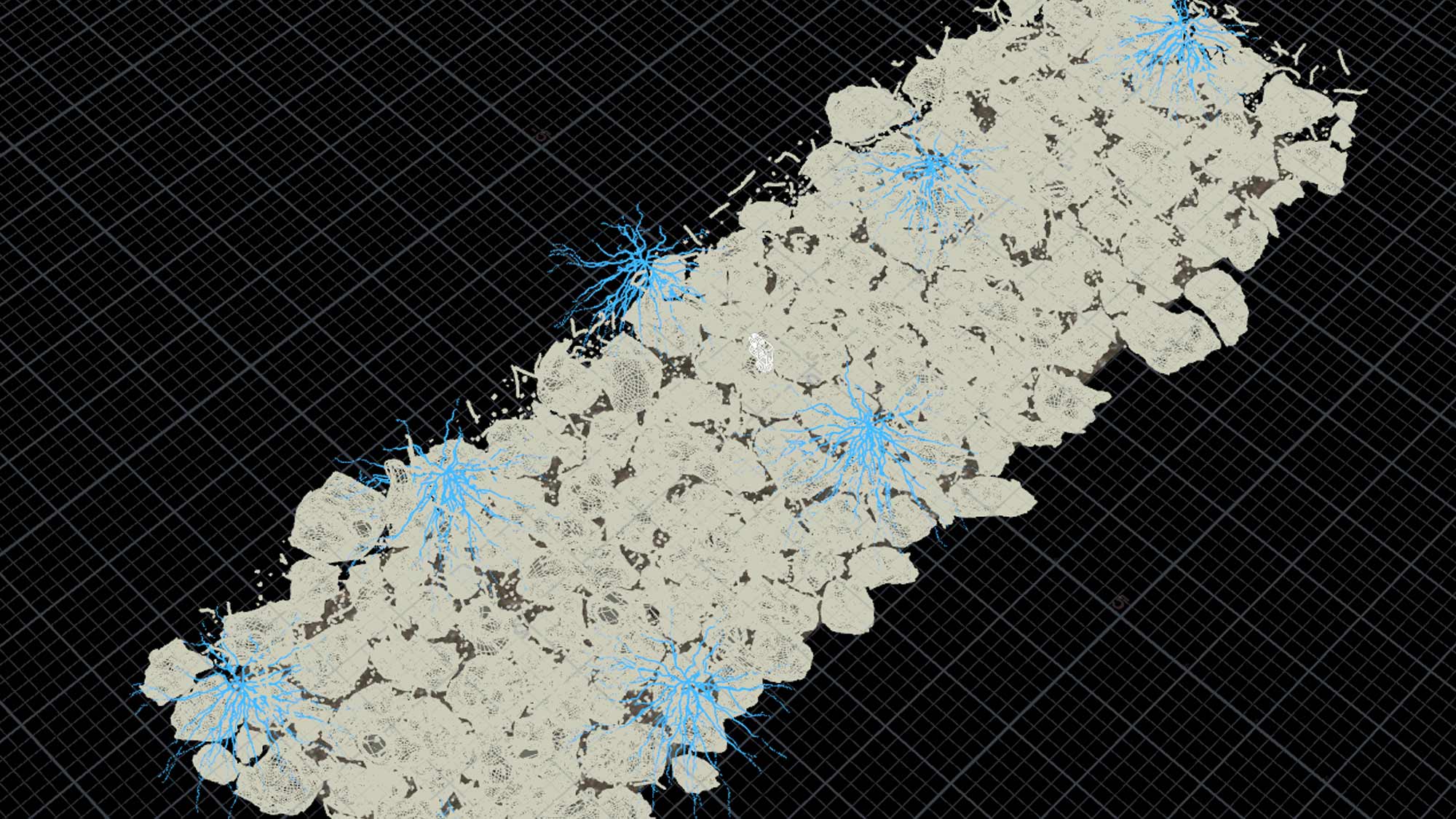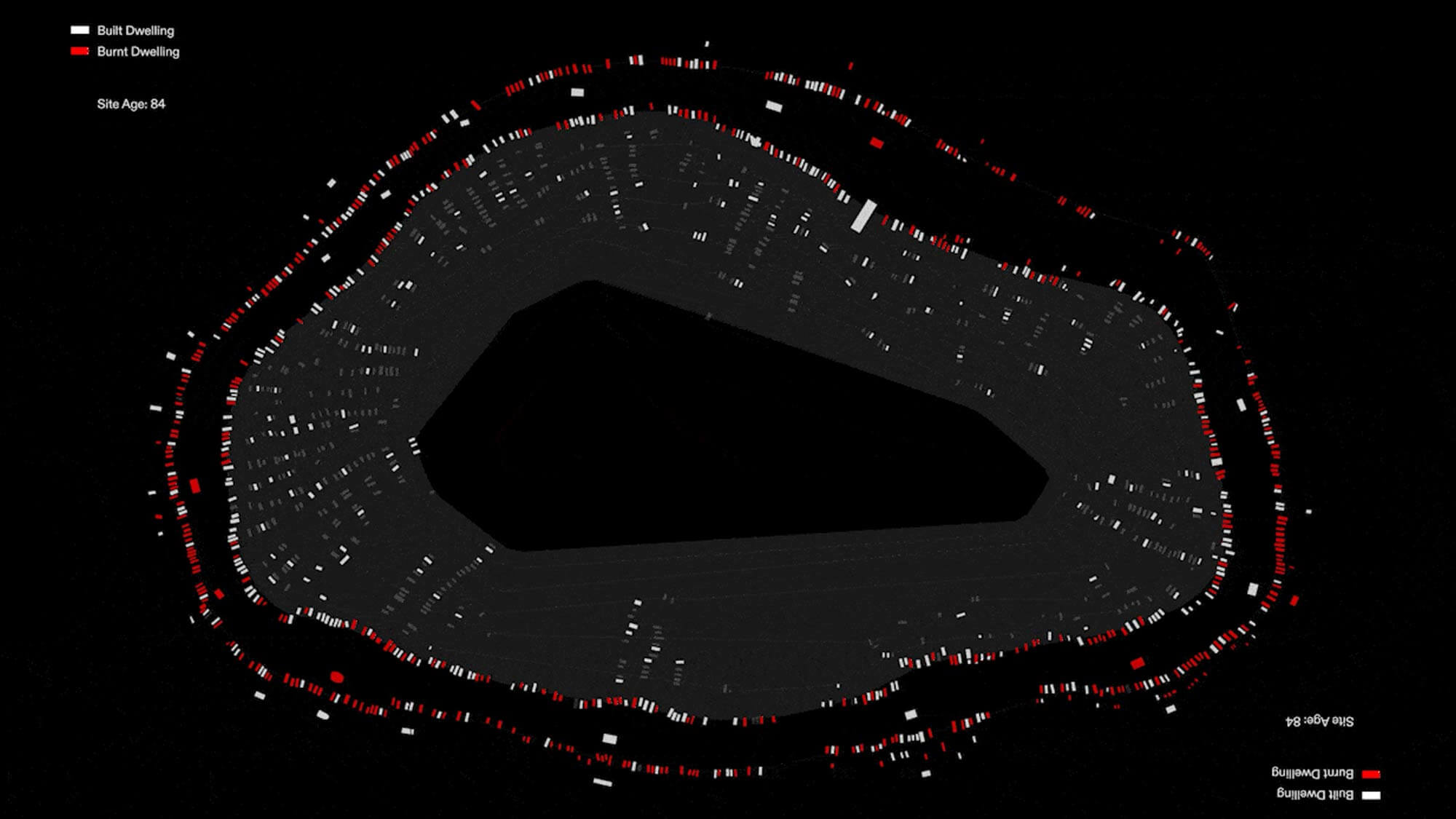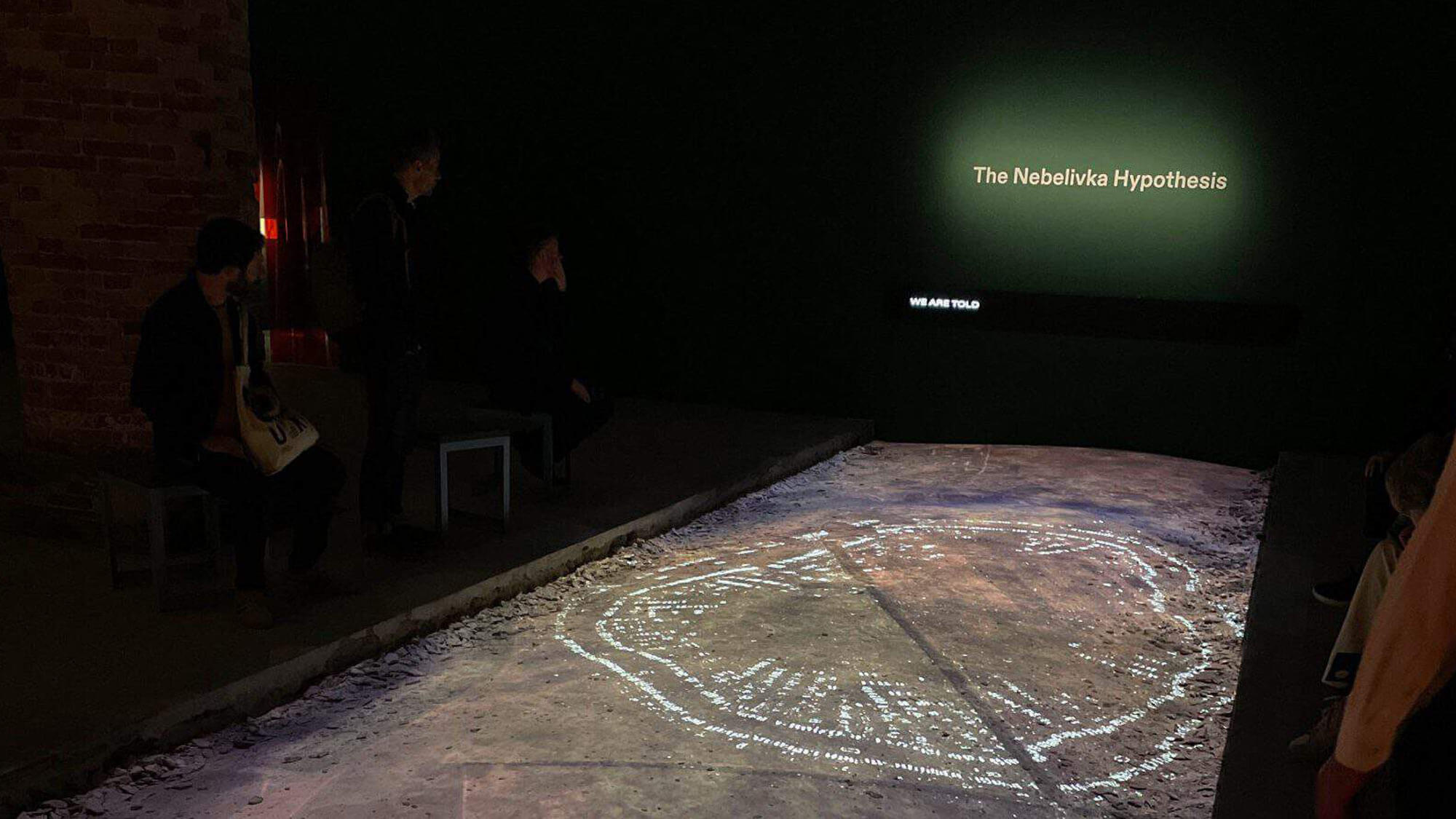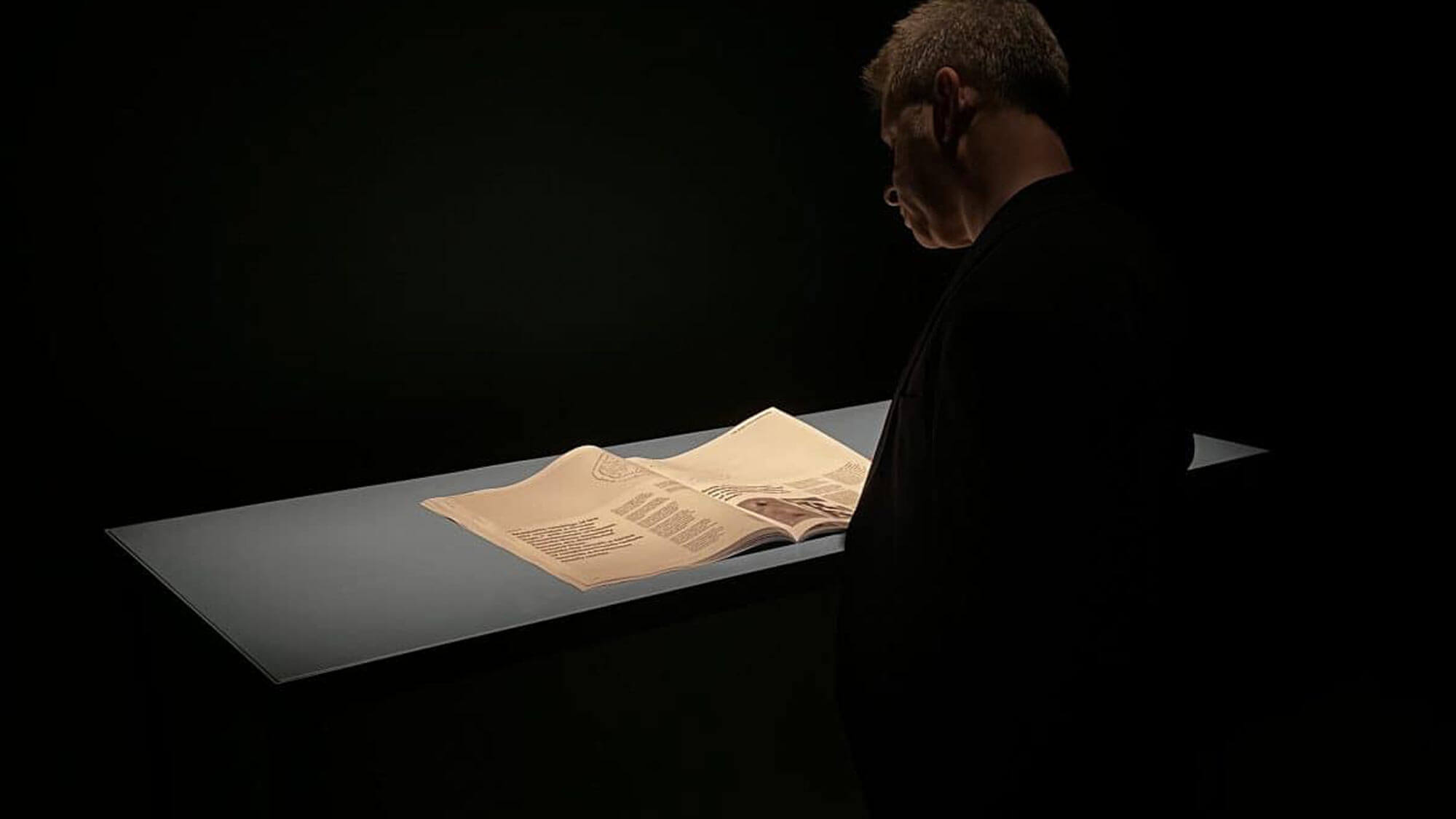Honorary Mention
Below Ukraine’s rich, black soils lie ancient settlements, rivals in scale to the first Mesopotamian cities, yet conceived on radically different principles. Their archaeological remains trouble our understandings of urban space, power, and ecology.
forensic-architecture.org/investigation/the-nebelivka-hypothesis
Archaeological research reveals that the 6,000-year-old settlement of Nebelivka is organized in concentric rings of domestic buildings around an open space, without signs of centralised hierarchy or social stratification. Our project, arising from a partnership between Forensic Architecture and archaeologist David Wengrow, integrates digital technologies and computational science with archaeological practice and material analysis, extending the vision of both fields. Our agent-based model simulates the distribution of buildings in Nebelivka, exploring inherent indeterminacies and possible urban configurations. The model reveals the outlines of a social process: a collective imagining and reshaping of human relationships; a multiplicity of urban worlds and ways of inhabiting them.
Some argue that the foundation of such sites in Ukraine accelerated the formation of Chernozem, one of the richest soils in the world. The famous black earth soils of the Ukrainian forest steppe may be Anthrosols, confronting us with the possibility of urban life which enhances the vitality of its environment. Using data from the ground at Nebelivka, we simulated digital soil strata, modelling the interactions between human and non-human forces, redefining soil as an active, evolving archive of urban life and archaeological artefact in its own right, rather than a static layer of history. Our project offers a new paradigm for architecture and archaeology by innovating at their intersection to transform our understanding of urbanism: if these ancient Ukrainian sites are indeed considered cities, then our concept of the city and its territory, as rooted in histories of extraction and hierarchy, must change. This is the ‘Nebelivka Hypothesis.’
Credits
Forensic Architecture (FA)
Researchers-in-Charge: Eyal Weizman, David Wengrow
Project coordinator: Davide Piscitelli
Researcher: Agata Nguyen Chuong
Video editor: Natalia Sliwinska
Sound designer: Mark Nieto
Project and editorial support: Elizabeth Breiner
Project support: Andra Pop-Jurj, Sarah Nankivell
FA Extended Team
3D Modelling: Rosie Emery, Matteo Zamagni
Editor: Riccardo Badano
Narrator: Ewa Domaradzka
Graphic designer: Hanna Rullmann
The Nebelivka Project
Bisserka Gaydarska
John Chapman
Marco Nebbia
Manuel Arroyo-Kalin
Duncan Hale
James Innes
Bruce Albert
Brian Buchanan
Mikhailo Videiko
Aleksandr Diachenko
Valentin Sobchuk
The Center for Spatial Technologies (CST)
Maksym Rokmaniko
Andrew Onyshchenko
Daryna Vilkhova
Mykola Holovko
Natasha Pereverzina
CST Extended Team
Sergey Revenko
Oleksiy Makulskiy
External Collaborators
University College London: Kris Lockyear
Goldsmiths, University of London: Nicholas Donald
Mayor of Nebelivka: Mr Bobko
With support from: The Richard and Peggy Greenfield Foundation
Biography
Forensic Architecture is an interdisciplinary research agency born during the ‘open source revolution’. ‘Forensic architecture’ is also the name of an interdisciplinary academic field developed and developing from within our research agency at Goldsmiths’ Centre for Research Architecture (CRA) since 2010. The term refers to the production and presentation of spatial evidence within legal, political, and cultural contexts, and takes architecture to include not only buildings, but shaped environments at the scale of cities and territories.
Jury Statement
Although cities are often seen as monuments to power, hierarchy, and extraction, ancient sites like Nebelivka suggest another beginning. Hidden beneath the fertile black soils of Ukraine, this 6,000-year-old settlement reveals a vast, organized society—yet with no palaces, temples, or ruling elites. In collaboration with archaeologist David Wengrow, Forensic Architecture explores this forgotten urbanism through soil analysis, agent-based models, and spatial reconstruction. The Nebelivka Hypothesis invites us to rethink what a city is and could be: not a center of domination, but a site of cooperation, shared life, and ecological balance. Bridging archaeology, technology, and storytelling, the project opens a space where ancient futures re-emerge.








